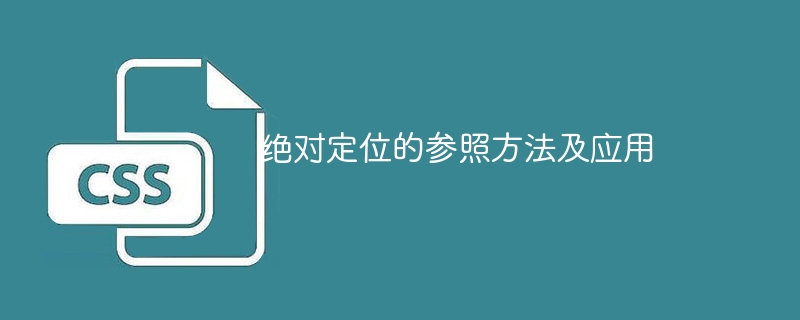

Reference method and application of absolute positioning
Absolute positioning (Absolute Positioning) is a commonly used layout method in CSS. By specifying an element relative to its nearest non- Static (default positioning method) is positioned at the position of the parent element or document. Using absolute positioning, elements can be placed at any location without being affected by other elements, providing a more flexible layout.
Reference method of absolute positioning
In CSS, absolutely positioned elements have the following characteristics:
Application scenarios of absolute positioning
Code examples for absolute positioning
The following are code examples for absolute positioning in several common application scenarios:
HTML:
<nav class="navbar">
<ul class="navbar-list">
<li>首页</li>
<li>关于我们</li>
<li>产品服务</li>
<li>联系我们</li>
</ul>
</nav>CSS:
.navbar {
position: absolute;
top: 20px;
left: 20px;
}
.navbar-list {
list-style: none;
padding: 0;
margin: 0;
}
.navbar-list li {
display: inline-block;
margin-right: 10px;
}HTML:
<div class="photo-gallery"> <img class="photo lazy" src="/static/imghw/default1.png" data-src="photo1.jpg" style="max-width:90%" alt="Reference method and application method of absolute positioning" > <img class="photo lazy" src="/static/imghw/default1.png" data-src="photo2.jpg" style="max-width:90%" alt="Reference method and application method of absolute positioning" > <img class="photo lazy" src="/static/imghw/default1.png" data-src="photo3.jpg" style="max-width:90%" alt="Reference method and application method of absolute positioning" > <img class="photo lazy" src="/static/imghw/default1.png" data-src="photo4.jpg" style="max-width:90%" alt="Reference method and application method of absolute positioning" > </div>
CSS:
.photo-gallery {
position: relative;
width: 500px;
height: 500px;
}
.photo {
position: absolute;
width: 200px;
height: 200px;
border: 1px solid #000;
}Absolute positioning is a commonly used layout method in CSS and is suitable for many scenarios. By setting relative position attributes, elements can be freely placed on the page to achieve precise layout effects. In actual development, we can reasonably use absolute positioning to achieve various layout effects of web pages according to specific needs.
The above is the detailed content of Reference method and application method of absolute positioning. For more information, please follow other related articles on the PHP Chinese website!
 What are the web servers?
What are the web servers?
 How to register for corporate Alipay
How to register for corporate Alipay
 js string to array
js string to array
 How to turn off windows security center
How to turn off windows security center
 langbar.chm
langbar.chm
 How to delete my WeChat address
How to delete my WeChat address
 Introduction to Kirchhoff's theorem
Introduction to Kirchhoff's theorem
 The difference between flutter and uniapp
The difference between flutter and uniapp
 How to solve the problem when the computer CPU temperature is too high
How to solve the problem when the computer CPU temperature is too high




